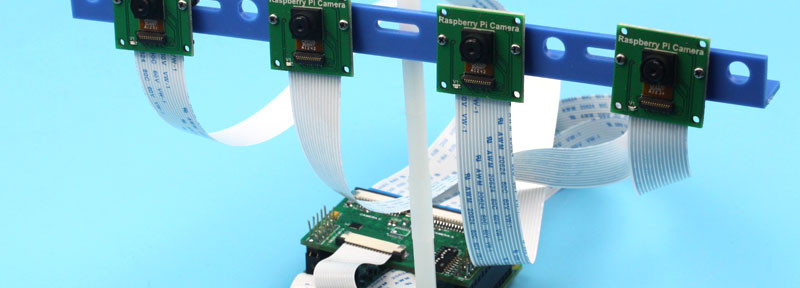
- #Ip camera raspberry pi how to#
- #Ip camera raspberry pi software#
- #Ip camera raspberry pi download#
- #Ip camera raspberry pi windows#
Next insert the SD card which we put the image onto in step 1. If you want to use a screen for debugging or entering commands, connect this up now. Even if you want to use it on Wi-Fi but have the option to plug it into the ethernet, setting it up while it’s on a wired connection will be easier.įirst things first, get your Pi and plug it into the router/modem using the ethernet cable. Things will be easier for you if you have a screen of some kind (be it a monitor or my personal favourite, the 7″ Pi touchscreen) to view the output of the Pi, but this isn’t strictly necessary if you have an ethernet cable and router/modem.

Just close them all down and make sure not to format the drive, we don’t want to undo all of our hard work!įirstly we will want to get our Pi ready.
#Ip camera raspberry pi windows#
Once done, windows will probably freak out and tell you to format the drive and open many windows and show a handful of error messages. Make sure to select the right SD card (I’m not being held responsible if you wipe over the wrong thing here) and once you’re happy, hit “Flash!” You should be greeted by the following page. Once you have gotten this far, click “Select image” and go to wherever you put the unzipped “.img” file and select that. Once you have it installed, insert the SD card into your laptop or computer (you may need some kind of adapter, not many laptops have a micro SD card slot) you should launch balenaEtcher and you will be greeted by this screen that looks something like this if everything went well I am using a tool called balenaEtcher which can be downloaded here.
#Ip camera raspberry pi software#
Now to get the software on the SD card, and yes, it does again require more software.
#Ip camera raspberry pi download#
You should download a file with the extension “.img.xz” which is what we want. As of writing the Raspberry Pi 4 image (which we will be using here) works but is still in re-release. Make sure to select the latest build that will work with your device. You will then want to download the MotionEye operating system which can be found here. Note: you will want a class 10 or better SD card to prevent recording issues with data bottlenecks Firstly you will need to format this SD card, you can use whatever tool you want for this, but my personal choice is SD Memory Card Formatter from SD association. To begin with you will need a micro SD card, ideally above 16GB in order to leave room for some recording space, but a bigger card will give you more recording time.

But this can be a great use for your old Pi if you aren’t bothered about a high FPS or resolution.


We will be using the Raspberry Pi 4 for this tutorial, but any generation of Raspberry Pi will work, you will just notice worse performance the earlier the generation.
#Ip camera raspberry pi how to#
Ever wanted to see what your dog gets up to during the day? Ever wondered who keeps stealing your wheelie bin? Maybe you just want to see whats in your fridge while you’re at the shop? The applications of a live video feed are endless, but today we will show you how to quickly and easily set up your Raspberry Pi as a CCTV camera.įor this tutorial we will be using MotionEye, an operating system for your Raspberry Pi in order to stream your video live on your network and also look at viewing the feed outside your network.


 0 kommentar(er)
0 kommentar(er)
